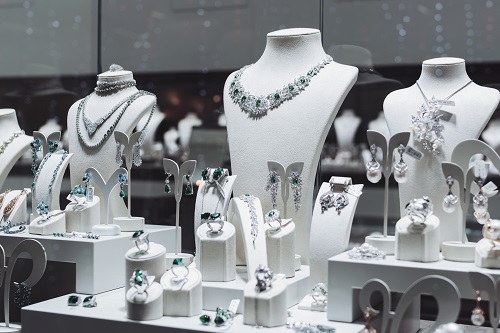
The traditional summer slowdown may now be a thing of the past. More jewelers have been enjoying year-round business. And as the season heats up, calls for lab-grown diamonds are doing the same; man-made stones are becoming a mainstay even for some of the more old-fashioned businesses out there. Fortunately, retailers have reported only minimal supply chain issues and are hoping to ride the summer wave straight through to solid second-quarter sales.
‘It’s not just at Christmas anymore’
David Borochov was feeling “pretty confident” as summer approached. “People just seem to be in a better mood during the summer months,” said the manager of R&R Jewelers in New York. “If you’re spending your day at a jewelry store, as opposed to the beach, you’re a serious consumer. You’re in there for a reason.”
Demand for engagement rings and wedding bands tends to increase during this period, he added. “[It’s] wedding season at its peak. [And] summer is the perfect proposal season. I get to work with a ton of new couples shopping for an engagement ring during the summer season.”
While winter has traditionally been the busiest time for store owners, they are embracing this new year-round shopping cycle.
“The purchase of jewelry is not just at Christmas anymore,” said Christine Weber, owner of Schapell Jewelers in Boulder, Colorado. While December is “probably a quarter of our business,” she explained, business during the rest of the year seems to be evening out. “It used to really dip in the summertime. I don’t see it dipping like it used to.”
Even in places that have seen a slight drop in sales, the declines have not been as dramatic as they once were.
“You can start to see a slowdown, but still, you have people that are in town, and you have [visitors] coming in,” said Benny McNair, who co-owns McNair Jewelers in Gadsden, Alabama, with his wife Gail. “So it’s still busy. It’s good throughout the year. Years ago, it was ‘June bride,’ but not anymore. There are brides all year. Then you have wedding gifts and anniversary things, and they’re building new pieces and adding to what they have. It’s constant, and I’m thankful for that.”
Slim styles, big diamonds
Gift items, especially for summer celebrations such as weddings and graduations, tend toward the sentimental, said McNair, noting that pearls and gem birthstones were doing well.
Trend-wise, slim bands are in. “Consumers, especially the younger generation, seem to prefer the minimalist, dainty, everyday jewelry,” reported Borochov, adding that “in regards to engagement rings, I’m selling just as many lab-grown diamonds as earth-mined, if not more. It’s wild.”
Even with the tiny bands, Weber’s customers have been looking for larger stones. “Single engagement rings have gone from 0.50 carats or 0.75 carats to 1 and above, up to about 5. Large diamonds are set on these delicate, itty-bitty things.”
She’s also been selling smaller jewelry and light, layered, stackable rings. “We’ll toggle between very delicate, simple pieces and really large heavy pieces. That middle ground doesn’t seem to be as popular as it used to be.”
Questions of provenance
None of the interviewed store owners have felt much in the way of supply chain issues.
“We have had a few snags with some pieces that were out of stock,” acknowledged McNair. “But as a general rule, the supply chain is not going to affect us like it does grocery stores.”
Depending on the clientele, provenance can be a concern, but Weber expects those kinds of questions from her environmentally conscious customers. “[Provenance] is definitely a conversation that we have often,” she said. “And we have several different sources. All of our [diamond] vendors have signed the Kimberley [Process] treaty. We also do lab-grown diamonds. Boulder is a very educated area and is very sensitive to what’s going on in the world. So that’s a question we deal with on an almost daily basis.”
Even store owners whose customers don’t ask about sourcing are warming to lab-created stones. “At one time, when they had all the emphasis on blood diamonds, [provenance] was at the forefront of customers’ minds, but that was before Covid-19 days,” said McNair. “People just don’t ask about that anymore. For the most part, their question would be, ‘How much does it cost?’”
Often, the price question leads him to talk about lab-grown. “I had to wrap my head around it, and it took me a while, being old-school and all that,” he admitted. “But it’s becoming more popular, and it has helped out in some price points, [letting people]
Image: A jewelry store. (Shutterstock)
Article from the Rapaport Magazine - July 2022. To subscribe click here.